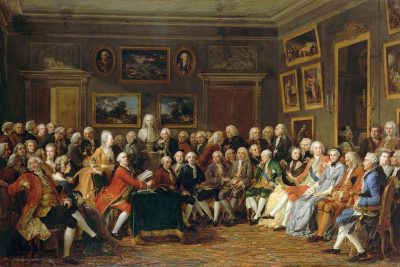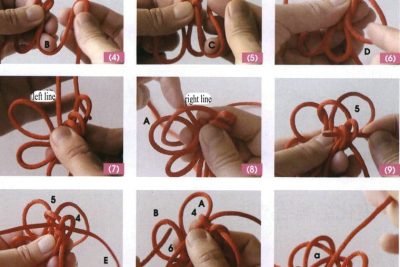
David Packard Foundation: Biography, Facts, and Impact

The David Packard Foundation stands as a testament to the impactful legacy of its co-founder, David Packard, who was a pioneering force in the technology industry and philanthropy. Established in 1964, this foundation has played a critical role in supporting various initiatives, primarily in the realms of conservation, education, and community health. By channeling the principles of innovation and integrity that Packard embodied throughout his life, the foundation seeks to uplift communities and foster sustainable practices across multiple sectors. This article delves into the rich biography of David Packard, outlining his early life, significant achievements, and the lasting impact of the David Packard Foundation.
As we explore the life and legacy of David Packard, it's essential to highlight how his innovative spirit and entrepreneurial mindset paved the way for not only the success of the Hewlett-Packard Company but also for his philanthropic endeavors. Through the David Packard Foundation, Packard aimed to share his wealth and knowledge, influencing generations of individuals and organizations dedicated to positive societal change. This comprehensive exploration of his life will provide insights into how his experiences and contributions shaped both the technology sector and the world of philanthropy.
Early Life and Education
David Packard was born on September 7, 1912, in Pueblo, Colorado, into a family that valued education and hard work. His father, a successful businessman, instilled in him a strong work ethic and an appreciation for technology from a young age. Growing up during the Great Depression, Packard faced economic challenges that would shape his views on innovation and entrepreneurship. Always curious and eager to learn, he excelled in his studies, quickly developing a passion for engineering.
After graduating from high school, Packard attended Stanford University, where he pursued a degree in electrical engineering. His time at Stanford was instrumental in shaping his career, as he engaged with various academic and extracurricular activities. In 1934, he graduated with a bachelor’s degree and went on to earn a master’s degree in electrical engineering in 1939, just before the founding of HP. The values of innovation and collaboration he embraced during his education laid the groundwork for his future success.
Co-Founding Hewlett-Packard
In 1939, with just $538 in startup capital, David Packard and his friend William R. Hewlett embarked on a journey that would change the landscape of technology. They established the Hewlett-Packard Company in a modest garage located in Palo Alto, California, which would later become known as the “birthplace of Silicon Valley.” Their innovative spirit led them to create one of the first audio oscillators, which eventually gained traction in the market. This success marked the beginning of a partnership that would drive HP to the forefront of the electronics industry.
The co-founders’ approach to business was rooted in several key principles, including a focus on quality products, employee welfare, and customer satisfaction. By prioritizing these values, Packard and Hewlett created a company culture that fostered creativity and collaboration, empowering employees to take ownership of their work. As HP grew, it became known for its pioneering technologies and practices, setting a standard that many technology companies would aspire to follow.
Leadership at Hewlett-Packard
As HP continued to expand, David Packard assumed various leadership roles within the company. He became president in 1947 and later transitioned to the role of CEO in 1964. Under his leadership, HP evolved from a small operation into a giant in the electronics industry, developing groundbreaking products such as calculators, computer hardware, and measurement instruments. Packard’s vision for the company emphasized the integration of engineering excellence with a clear understanding of customer needs, leading to numerous innovations that shaped the industry.
In addition to driving product innovation, David Packard was also a strong advocate for employee development and corporate responsibility. He believed in creating an environment where employees could thrive and contribute to the company’s success. Through initiatives such as the HP Way, a set of guiding principles that emphasized teamwork, respect, and personal responsibility, Packard cultivated a distinctive corporate culture that attracted and retained top talent.
Transition to Government Service
In 1968, David Packard took a brief hiatus from HP to serve the U.S. government as the deputy to the Secretary of Defense under President Lyndon B. Johnson. During this time, he oversaw significant programs related to national defense, including the development of advanced jet fighter programs. His engineering expertise and business acumen proved invaluable during a period of rapid technological advancement within the military sector. Packard’s commitment to public service is reflective of his belief in the importance of using one’s skills and resources for the greater good.
Despite his success in government, Packard’s passion for the technology sector remained strong, and he returned to HP in 1972. His experience in Washington, D.C., broadened his perspective and prepared him for the strategic challenges that lay ahead as HP continued to navigate a changing market landscape. He applied the insights gained during his government service to enhance HP’s operations and foster collaborations with governmental agencies.
Return to HP and Later Years
Upon his return to Hewlett-Packard, David Packard focused on promoting innovation and maintaining the company’s competitive edge. During the 1970s and 1980s, HP expanded into new markets and embraced emerging technologies such as computing and telecommunications. Packard’s ability to adapt to changing trends and leverage opportunities contributed to HP’s sustained growth and influence in the tech industry.
After stepping down as CEO in 1978, Packard continued to serve as the chairman of the board until his retirement in 1993. Despite his departure from daily operations, he remained actively involved in the foundation’s initiatives and continued to influence the company’s overall direction. After his retirement, he turned his attention to philanthropy, channeling his passion and resources into various charitable endeavors.
Founding of the David and Lucile Packard Foundation
In 1964, David Packard and his wife, Lucile, co-founded the David and Lucile Packard Foundation, which was established to address pressing social issues and support nonprofit initiatives. With a deep commitment to education, conservation, and health, the foundation has dedicated resources to numerous causes aimed at improving the lives of individuals and communities. Notably, the Packard Foundation has invested heavily in environmental conservation, child development, and reproductive health initiatives, demonstrating a holistic approach to philanthropy.
The foundation operates with a vision rooted in Packard’s belief in the importance of giving back to society. By leveraging his business principles and experiences, the Packard Foundation has fostered a culture of collaboration among grantees, enabling innovative solutions to emerge from the communities it supports. This commitment to collaboration exemplifies the values that Packard instilled in HP, ensuring that the foundation remains a catalyst for positive change.
Philanthropic Contributions and Initiatives
The David Packard Foundation has made significant philanthropic contributions across various sectors. Among its most notable initiatives is the dedication to supporting environmental and conservation efforts, which have involved partnerships with organizations focused on marine and land conservation. By funding research and projects that aim to protect ecosystems and preserve biodiversity, the foundation plays an essential role in promoting sustainable practices worldwide.
In education, the foundation has been a strong advocate for early childhood development, recognizing the importance of investing in children's futures. Through initiatives aimed at improving educational access and quality, the Packard Foundation has partnered with schools and educational organizations to implement effective learning strategies and programs. This commitment to shaping educational outcomes reflects Packard's belief in the transformative power of knowledge.
Additionally, the foundation has significantly contributed to reproductive health initiatives, promoting awareness, education, and access to vital health services. By supporting organizations that work to improve maternal health and provide family planning resources, the Packard Foundation continues to bring attention to critical health issues that impact communities globally.
Awards and Recognition
Throughout his life, David Packard received numerous accolades for his contributions to both the technology sector and philanthropy. His achievements as an entrepreneur were recognized with the prestigious Presidential Medal of Freedom in 1988, reflecting his notable impact on the nation through innovation and leadership. This honor exemplified his dedication to public service and the legacy he left within the corporate world.
Moreover, Packard was awarded the National Medal of Technology, acknowledging his pioneering efforts in advancing technology and contributing to the growth of the American economy. These awards, among others, serve as a testament to his commitment to excellence and his lasting influence on future generations of entrepreneurs and leaders.
Legacy and Impact
The legacy of David Packard extends far beyond his contributions to the Hewlett-Packard Company. His vision and philanthropy have shaped numerous organizations and communities worldwide. The David Packard Foundation continues to play a crucial role in advancing various social causes, demonstrating the potential for businesses to create positive change through dedicated philanthropy.
Packard's commitment to corporate responsibility and employee welfare remains relevant today as businesses strive to navigate the complexities of a rapidly changing landscape. By prioritizing ethical practices and focusing on community engagement, the principles advocated by Packard can guide current and future leaders to drive meaningful change across different sectors.
Conclusion
David Packard's journey from co-founding the Hewlett-Packard Company to establishing the David Packard Foundation illustrates the profound impact an individual can have on both the business and philanthropic worlds. His innovative spirit, commitment to quality, and desire to give back have inspired countless others to follow in his footsteps. Today, the foundation continues to champion numerous causes, fostering progress and contributing to a brighter future for communities around the globe. Packard's enduring legacy serves as a reminder of the transformative power of technology and philanthropy working hand in hand to achieve a common goal: making the world a better place.
Did you find this article helpful? David Packard Foundation: Biography, Facts, and Impact See more here Education.
Leave a Reply






Related posts